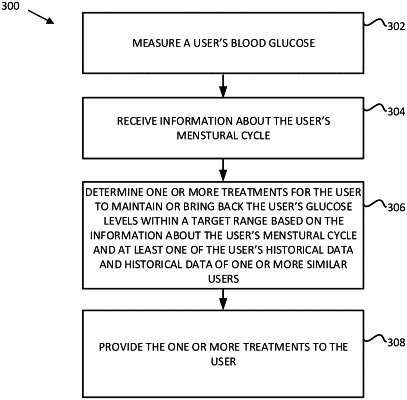| CPC G16H 40/67 (2018.01) [A61B 5/14532 (2013.01); A61B 5/4839 (2013.01); G16H 10/40 (2018.01); G16H 20/17 (2018.01); G16H 20/60 (2018.01); A61B 10/0012 (2013.01)] | 20 Claims |

|
1. A system comprising:
a processor;
a glucose sensor configured to measure glucose levels of a user to generate glucose measurements;
a sensor electronics module configured to transmit sensor data corresponding to the glucose measurements provided by the glucose sensor to the processor; and
a memory circuit in communication with the processor,
wherein the processor is configured to execute instructions stored in the memory circuit to:
receive information relating to a menstrual cycle of the user, the menstrual cycle comprising a plurality of menstrual phases,
identify a menstrual phase from the plurality of menstrual phases that the user is currently in,
determine a treatment for the user to achieve a target glucose during the identified menstrual phase of the menstrual cycle of the user based on historical data associated with a stratified group of users, wherein the stratified group of users is stratified at least based on menstrual cycle information,
wherein the historical data associated with the stratified group of users is structured to indicate a change in insulin resistance associated with the stratified group of users historically being in the identified menstrual phase, and a pattern of physiological impact of a plurality of treatments including the determined treatment on glucose measurements of the stratified group of users during the identified menstrual phase, the pattern indicating effectiveness of the plurality of treatments in regards to counteracting the change in insulin resistance and achieving the target glucose, and
transmit a signal to an insulin delivery device, thereby causing the insulin delivery device to administer insulin to the user based on the determined treatment.
|